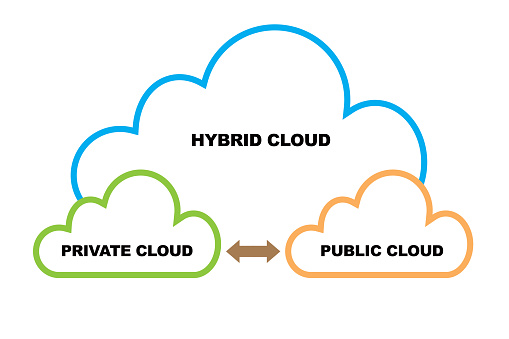What is a Hybrid Network?
And do I really need one?

In straightforward terms, a Hybrid Network is simply having two (or more) different network connections to a site. However there is much more to it than that, and the rest of this article we’ll take a look at the various hybrid network topologies that may suit your businesses network infrastructure and why you might need them.
The most common hybrid network topology that you’ll have come across is a primary MPLS and a secondary internet connection. This is often described in the literature as an SD-WAN with the main benefit being reduced costs, due to the internet connection often being put forward utilising multiple consumer-grade broadband connections.



Can an MPLS / Internet Hybrid Network reduce cost?
Hybrid Networks are often mentioned while discussing SD-WAN. This is because one of the benefits of SD-WAN is that it can help you create a hybrid network to reduce costs.
It is often thought that internet connectivity is cheap, while MPLS connectivity is expensive. Therefore reasoning suggests, that money can be saved by reducing the port on MPLS circuits (reserving them for applications that need Class of Service or Private Cloud access) and moving other traffic to the internet.
And though this can be the case in many countries such as the US, more often than not, here in the UK comparable circuit types can be similarly priced. For example here in the UK, a 50Mbps port on a 100Mbps Ethernet bearer can often be the same whether it points to the internet or to the MPLS network. The main variable here is the actual WAN provider.
But if your business has a globally diverse network, then the cost of international MPLS circuits can be extremely expensive compared to purchasing a local internet circuit. The main trade-off to keep in mind here though is that though significantly reducing the cost by using the internet circuit, you may lose some performance and central management control that an MPLS network brings.
Access to the Cloud
Many applications now have a growing reliance on the Public Cloud (internet) such as Salesforce.com or platforms like MS Azure and here it makes much more sense to direct traffic straight to the internet rather than via a central site through an MPLS network to then reach the internet, a structure often referred to as tromboning.
However, we are seeing a number of carriers providing connectivity to a growing range of Cloud-based applications and platforms through their MPLS networks providing the security and performance of a private network. Of course, MPLS access to Public Cloud apps and platforms will often lag being that of the internet as carriers have to provide the interconnections to their networks whereas the application and platform providers are in control of the internet interconnectivity.
Optimised IP
One new development which numerous SD-WAN vendors can take credit for is the creation of a new network type. There’s now a third option between Internet and MPLS and that is Optimised IP. Here SD-WAN providers are putting their own equipment or software in data centres around the world and next to Platform and Software as a Service providers to improve the performance of the internet.
There are a couple of variations to this model but on the whole, a customer will still purchase their own local internet circuit with the SD-WAN CPE creating a secure tunnel to the SD-WAN vendors nearest Point of Presence on the internet. Once at this PoP the data will use private connectivity to reach the nearest PoP to where the data is trying to reach, thus not traversing multiple networks. Creating what is in some form your own Private Cloud within the internet.
This solution looks to combine the advantage of MPLS performance with the cost advantages of local internet access and works best as a cost-effective alternative to international MPLS connections.
A full Hybrid Network is the best of all worlds
When you take the concept of a Hybrid Network at its most literal definition then you can get the best solution of all worlds. The most literal definition is that of selecting the right technology, from the right carriers for each of your site's connections and the application priority and security you require.
To illustrate, here at Optimus Networks we create our customer networks by joining multiple carrier networks and associated services such as Cloud access and Hosted telephony, and integrating them in a best of breed solution.
We use multiple carriers and providers as we know that they each have different strengths and weaknesses, with no single carrier getting 5 stars in all the boxes. Some carriers have markedly superior delivery SLA’s; some have a more comprehensive selection of access options; some are good when they’re on-net for both delivery and price, and some are stronger in certain geographies.
Often the best Cloud services are with companies who purely focus on just that, rather than bolting on their Cloud service offering to a WAN as carriers often do. We have found the best results by having a more open approach to incorporating the best the market has to offer.
